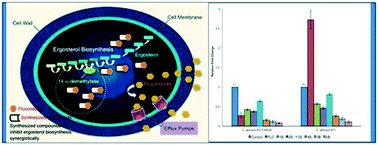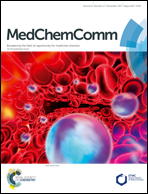Synergistic antifungal effect of cyclized chalcone derivatives and fluconazole against Candida albicans
Abstract
The occurrence of invasive fungal diseases, particularly in immunocompromised patients, is life-threatening and increases the economic burden. The rising problem of multi-drug resistance is becoming a major concern for clinicians. In addition, a repertoire of antifungal agents is far less in number than antibacterial drugs. To combat these problems, combination therapy has gained a lot of interest. We previously reported the synergistic interaction of some mono- and bis-dihydropyrimidinone and thione derivatives with fluconazole and amphotericin B for combination antifungal therapy. In this study we used the same approach and synthesized different azole and non-azole derivatives of mono-(M) and bis-(B) chalcones and evaluated their antifungal activity profile alone and in combination with the most commonly used antifungal drug – fluconazole (FLC) – against seven FLC susceptible and three FLC resistant clinically isolated Candida albicans strains. Based on the minimum inhibitory concentration results, the bis-derivatives showed lower MIC values compared to their mono-analogues. Both fractional inhibitory concentration index and isobologram results revealed mostly synergistic, additive or indifferent interactions between the tested compounds and FLC against different Candida isolates. None of the tested compounds showed any effect on energy dependent R6G efflux, revealing that they do not reverse the mechanism of drug efflux. However, surprisingly, these compounds profoundly decreased ergosterol biosynthesis and showed down regulation of ERG11 gene expression, which is the possible mechanism of reversal of azole drug resistance by these compounds. These results provide a platform for further research to develop pyrimidinone/thione ring containing compounds as promising new antifungal agents, which could be used in antifungal combination therapy.



 Please wait while we load your content...
Please wait while we load your content...